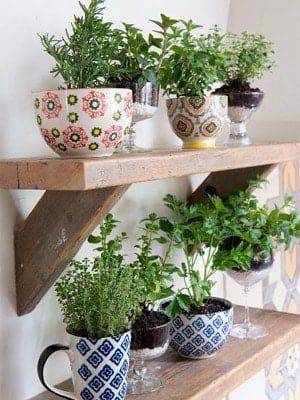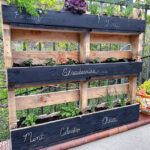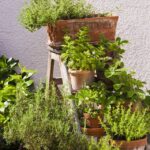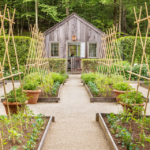Growing your own herbs at home can be a rewarding and beneficial experience. Not only does it allow you to have fresh herbs at your fingertips whenever you need them, but it also adds beauty and fragrance to your space. If you are looking to create a herb garden but are unsure where to start, here are a few ideas to get you inspired.
One popular herb garden idea is to create a kitchen herb garden. This can be as simple as placing a few pots of herbs on your windowsill or as elaborate as dedicating a section of your kitchen to a full-fledged herb garden. Some popular herbs to grow in a kitchen herb garden include basil, parsley, mint, and chives. These herbs not only add flavor to your dishes but also add a touch of greenery to your kitchen.
If you have a small outdoor space, consider creating a vertical herb garden. Vertical gardens are a great way to maximize space and add a unique and eye-catching element to your outdoor area. You can use a variety of containers, such as hanging baskets or wall-mounted planters, to grow your herbs vertically. This is a great option for those with limited space or for those who want to keep their herb garden off the ground.
For those who prefer a more structured approach, consider creating a formal herb garden. Formal herb gardens are typically laid out in a symmetrical or geometric pattern, with defined borders and pathways. This type of herb garden can add a sense of elegance and order to your outdoor space. Consider incorporating elements such as stone pathways, decorative borders, and ornamental features to enhance the beauty of your formal herb garden.
If you enjoy a bit of whimsy in your garden, consider creating a themed herb garden. Themed herb gardens can be inspired by a variety of sources, such as your favorite cuisine, a specific color palette, or even a particular time period. For example, you could create an Italian herb garden with herbs commonly found in Italian cuisine, such as oregano, thyme, and rosemary. Or, you could create a purple-themed herb garden with herbs such as lavender, sage, and basil, all of which have purple tones in their foliage.
No matter what type of herb garden you choose to create, be sure to consider the needs of the herbs you are growing. Most herbs prefer well-drained soil and plenty of sunlight, so be sure to place your herb garden in a sunny spot and water your herbs regularly. With a little bit of care and attention, you can enjoy a thriving herb garden that provides you with fresh herbs year-round.













